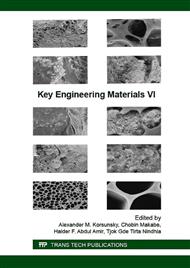p.304
p.309
p.315
p.323
p.332
p.338
p.345
p.350
p.357
Modeling the Heat of Hydration of Concrete Incorporating Fly Ash
Abstract:
The hydration evolution of concrete with different water-binder ratios and fly ash replacement percentages are studied by experimental investigation. Based on equivalent age concept, the effect of water-binder ratio as well as fly ash dosage on the ultimate temperature rise and heat release coefficient are analyzed with the hyperbolic-type calculating model of adiabatic temperature rise adopted. It is indicated that the adiabatic temperature rise will be reduced with the increase of water-binder ratio and the incorporation of fly ash. The hydration evolution process will be accelerated with the decrease of water-binder ratio, but slowed down when the amount of fly ash is enhanced.
Info:
Periodical:
Pages:
332-337
Citation:
Online since:
August 2016
Authors:
Price:
Сopyright:
© 2016 Trans Tech Publications Ltd. All Rights Reserved
Share:
Citation:


